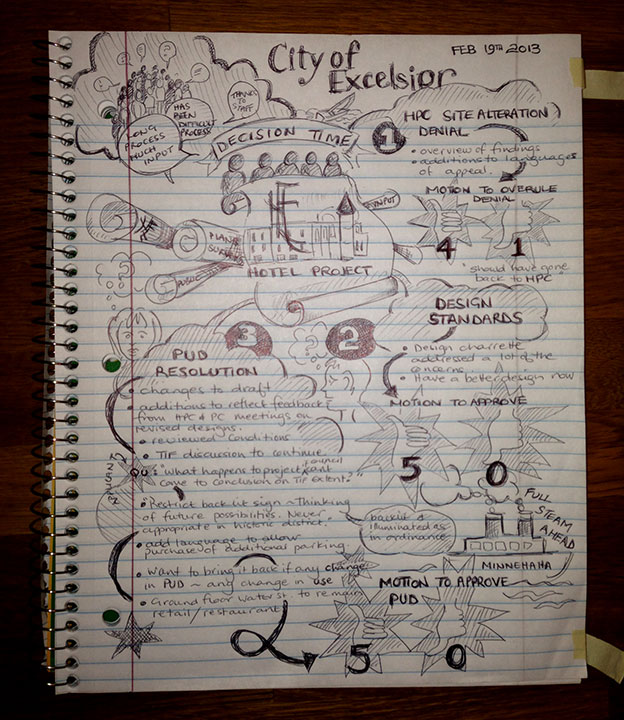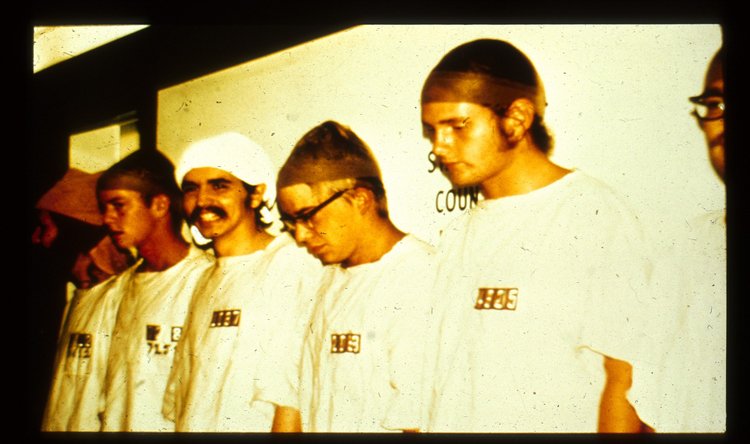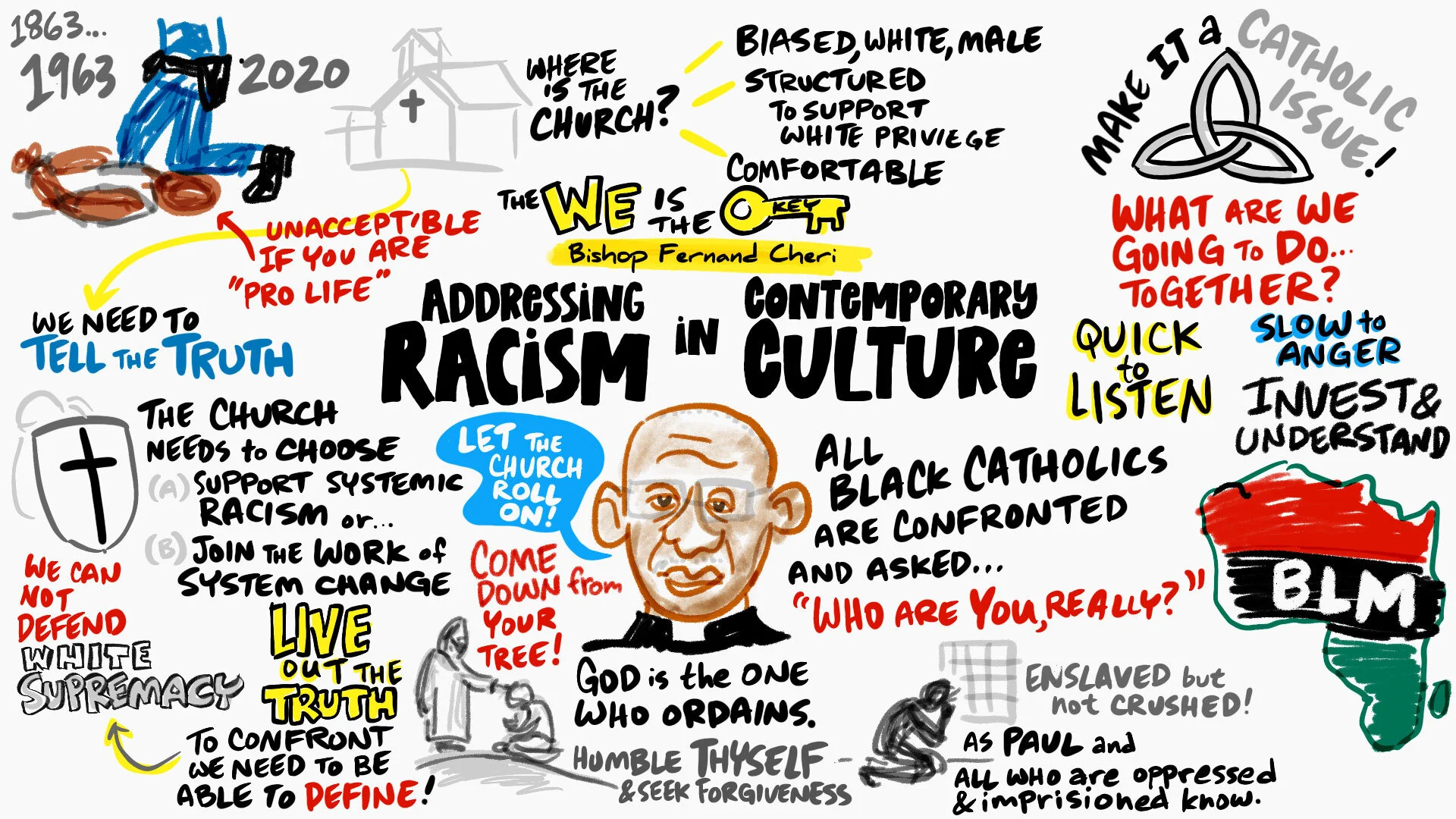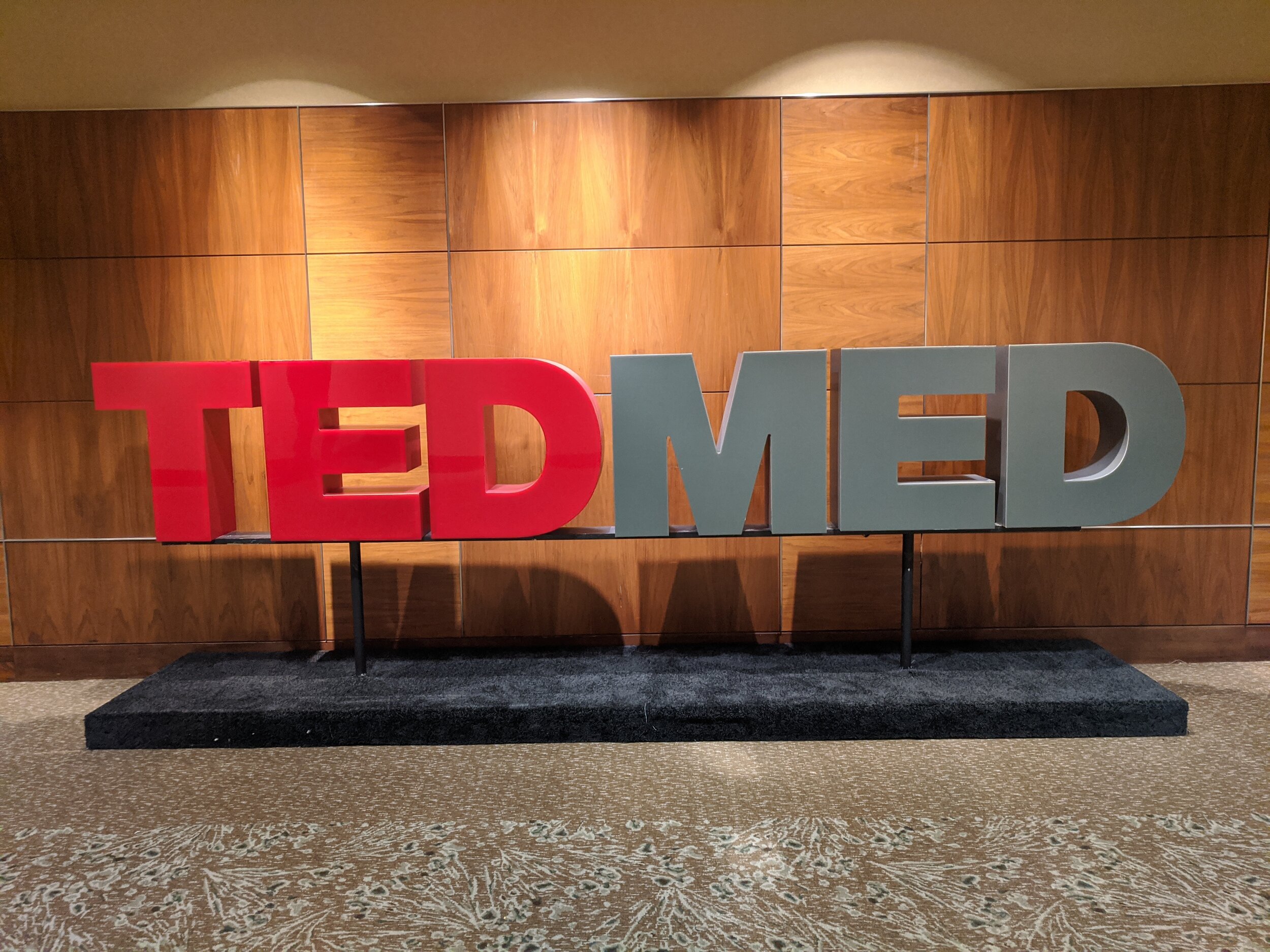7 Tips for Overcoming Fear of Scribing
/A student in our recent Rockstar Scribe courses had a huge problem.
After the course, Nicki Craig, a professional artist based in Minneapolis, described her reaction in an email:
I seem to have major mind freezing nerves when working up front with an audience!! That took me by surprise as I have painted in front of people no problem. Thanks for the encouragement to us all. It helps knowing that you have “The Chatter” too. Again, many thanks. I learned a lot and left inspired to keep finding my place in this visual recording/communication world.
The good news is that Nicki is 100% normal.
In fact, she was simply confronting the #1 issue that keeps people, even super-talented and well-trained artists, from making the leap from the safety of the studio to the insecurity of the stage.
The #1 Obstacle to Becoming A Kickass Scribe
Stage fright. Butterflies in the stomach. Cold feet.
Whatever name you use for the feeling, they all describe the same thing — the fear of failing publicly.
In order to function, most top performers have learned to cope with this not-so-little voice in their head, the one that shouts:
“Don't screw this up!”
But how can graphic recorders effectively balance the flood of new information and process those ethereal ideas in concrete visual form, even while quietly freaking out?
Let’s look at how one megastar performer handles this same fear.
Her current married name is Knowles-Carter, yet like many superstars such as Cher, Bono, Macklemore, she goes by her single word moniker: Beyoncé.
However, once on stage, that is not Beyoncé we see at all… it’s her alter ego, Sasha Fierce.
Here’s how Mrs. Carter describes it:
“I have someone else that takes over when it’s time for me to work and when I’m on stage, this alter ego that I’ve created that kind of protects me and who I really am. Sasha Fierce is the fun, more sensual, more aggressive, more outspoken side and more glamorous side that comes out when I’m working and when I’m on the stage.”
This month in Brazil, we witnessed another superstar face the fear of failing publicly. That plus the fear of being smacked in the face by a leather ball traveling 80 mph (129km/h).
Tim Howard is the goalie for the US soccer team. In their final game with Belgium, Tim broke the World Cup record for most saves — a whopping 16 saves during the match.
Howard was also playing against three good friends on the Belgium team, men he admittedly loved, respected, and feared.
However, once the referee blew the whistle, Tim said he was ready to “rock and roll”.
Mick Jagger, a true icon of Rock-n-Roll, was asked in a recent radio interview if he had stage fright after all these years. He responded:
No, you don’t get nervous. Before the first night of a tour, it can be very harrowing because you don’t really know what’s going to happen – you don’t know how the set’s going to work, you don’t know anything. It all could go terribly wrong. It doesn’t usually. I’ve seen people that get stage fright and it’s horrific. You think ‘why are they doing all this?’
So, in the face of fear of failing in a colossally public way, how do artists cope?
Fear to Perform is the Norm
As most performance coaches will tell you — be prepared and focus your thoughts.
Dr. Noa Kageyama is a performance psychologist on the faculty of The Juilliard School in NYC and the New World Symphony in Miami, Florida.
He works with talented musicians prepare for orchestra auditions and shares his findings on his blog, The Bulletproof Musician.
The advice Dr. Kageyama shares is applicable not only to musicians, but to facilitators and graphic recorders… especially when it comes to this — audiences love to watch talented people improvise.
After all, that is exactly what graphic recording is about. Improvisation is to “create and perform spontaneously or without preparation”.
In order to improvise, you have to balance two neurological characters in the brain: the critic and the juggler.
First, the artist must silence the internal critic, located in the Brodmann Area 46 (BA46) of the dorsolateral prefrontal cortex (DLPFC). This is the part of the brain closely tied to choosing the right word for the right context, and deciding what is socially acceptable.
The DLPFC has recently been found to be involved in exhibiting self-control, and plays a role in sustaining attention and working memory.
That brings us to the second activity involved in improvisation: the artist must retain complex working memory to perform tasks (ex. play piano, sing, or scribe) while reacting to new information.
It is like jugglers adjusting their pattern of tossing and catching objects as new and different objects are added to the mix.
Kageyama mentions a joint study, a collaboration of researchers from the Guildhall School and Imperial College London examined the electrical signals in the brains of musicians and listeners.
An area of the brain known to be involved in sustained attention, working memory and the inhibition of responses, known as the Brodmann 9 area was much more active in both musicians and listeners during the improvised performances. This indicates that the audience were much more engaged when listening to classical music containing improvised elements.
So the first thing to know when scribing is that your audience is very curious — hence engaged — and wants to see what you are going to produce.
The idea that your audience is actually paying attention to you may ratchet your anxiety level even higher.
So here are some techniques I use to keep me centered and focused, while silencing “The Chatter”.
The good news is that our little big brains can only focus on one thing at a time. So using the habits of mindfulness and self-distraction can get you avoid cold feet or a fully formed panic attack.
Tips for Decreasing Anxiety
1. Have a routine.
Being prepared mentally and physically are key. Doing the same things in the same order helps to cultivate a feeling of competency.
Australia-based graphic facilitator Michelle Walker says that she makes sure to have a copy of the event's agenda posted by her paper as part of her equipment station.
2. Stay in motion.
These could include the set-up of your “scribe station” or organizing your drawing tools. Before the event begins, I may start drawing a big title, or created a border, or trim paper.
To combat Blank Canvas Syndrome, veteran scribe Roberta Faulhaber draws a longish line in some nice color on the paper to conquer the fear of that huge empty page.
Basically, do anything to stay in focused “task mode” vs. worrying about what is coming next.
3. Check your equipment.
One of the biggest stressors is broken or sub-optimal tools or a messy, inefficient work environment. You don't want to run out of ink just as the CEO is about to list The 10 Most Important Things.
4. Cultivate a service mindset.
Social Anxiety Disorder is no joke.
But mild situational anxiety can be reversed by simply focusing on others. Ask the event organizer or lead facilitator how you can be of service. Straighten chairs. Clean up after others. Inquire how someone is feeling.
Looking for ways to be of service shifts focus from ourselves.
5. Smile and breathe.
Mindfulness is our best tool.
When feeling anxious, French graphic facilitator Guillaume Lagane writes:
As far as I'm concerned, I try to slow down till I catch the present moment. Anxiety/fear is all about “what comes next”, not about “Now”. To do that, I just stand at the wall [in the] right position, distance and posture, with head down, eyes closed. A deep breath, some shoulders stretching… That's it! Anxiety only stays for a couple of seconds (max 2 minutes).
When all else fails… stop, smile, breathe. Repeat.
6. Be authentic.
Even if you feel like an impostor!
Johnine Carlone Byrne finds that anxiety makes her a nervous speller. So she works with a little notebook that acts like a parking lot for things being said that need a bit more time to develop but that she doesn’t want to forget.
On the last page is my spelling cheat sheet which has words I have stumbled over in the past ( for example: commitment has one ‘T’ not two). I add to that list after every gig with any word that hung my up. That little cheat sheet helps with my confidence; even if I don't need to use it… I know it's there!
If something “bad” happens — you knock over a table, you trip, you have no idea how to spell entrepreneurialism… just go with it. Apologize if you must, and carry on.
7. Have fun.
If you are engaged and enjoying the act of creation (while also honoring the content you are capturing) your audience will, too!
Dutch architect, illustrator and graphic recorder, Anabella Meijer aptly describes the combination of peace, anxiety and joy she feels in “creative process as public service”:
The weird thing is that I have quite some fear of failure, but graphic recording brings out the confident improvisor in me! I feel no fear at all, just the relief of not having to think for too long about something but just do it. As a designer and artist I tend to hesitate a lot, but with recording I almost always achieve flow. So maybe a tip would be: see yourself as a tool, as a vessel of something greater than yourself. And yes, the audience always loves it!
For more on "flow" check out Hasty Reader's summary of the famous 1990 book on the subject by psychologist and researcher Mihaly Csikszentmihalyi.
So how did our student Nicki Craig combat the jitters?
Rather than jump into the deep end of the pool and scribe in front of the audience, she did the next best thing — she started small.
She was thrilled to hear that her style of note-taking now has a name, inspired by Mike Rodhe.


Sketchnotes have opened up the possibility of working small scale sat in audience rather than up front — which I like too! I emailed a "note" I did during one of our city meetings regarding a big project — I was in the audience note taking for myself — only had the lined paper note book with me. The possibility of doing the work on the smaller scale really intrigues me.
Rohde codifies and simplifies his own visual language, hand-crafted typography, and tools for sketchnoting in The Sketchnote Handbook and video edition.
As for scribing publicly, we often forget an important detail — as creators of images, we are true magicians; we create something concrete seemingly from thin air.
The audience truly is on our side. (Even those persnickety wordsmiths who like to point out our spelling errors!)
In fact, our audience can't help themselves.
Neuroscientists have once again proven through fMRI scanning what we already know through experience: humans are hard-wired to enjoy art.
Fast Company describes in this article a meta-analysis by researchers at the University of Toronto which yields new insights into our neurochemistry.
Published in the June issue of Brain and Cognition, the meta-analysis pooled data from 15 studies mapping how the human brain responds to paintings and suggests that the human brain is indeed built for art appreciation. (duh!)
Whether you chose to go big and public or small and private, if you want to begin living and learning visually, well… just begin!
QUESTION FOR YOU: What techniques do you use to counteract the effects of anxiety or negative chatter between your ears? Let us know in the comments below.
If you or someone you know is interested in becoming a Rockstar Scribe, check out our online course at: www.learntoscribe.com









